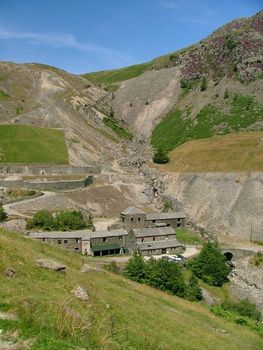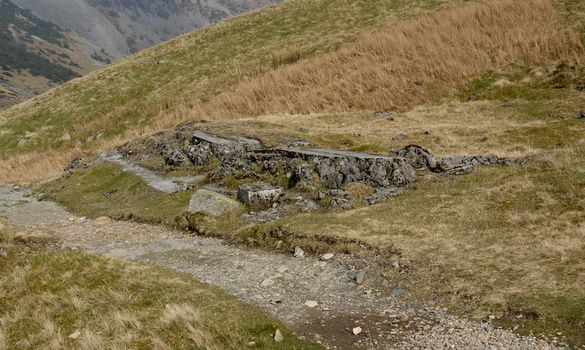Greenside Mine
Greenside Mine (sometimes referred to as Greenside Lead Mine) was a successful lead mine in the Lake District of England. Between 1825 and 1961 the mine produced 156,000 long tons (159,000 tonnes) of lead and 1,600,000 ounces (45 tonnes) of silver, from around 2 million tons of ore. During the 1940s it was the largest producer of lead ore in the UK. Unusually for a 19th-century metalliferous mine in Britain there are very full records of its activities, dating back to 1825.
The men who worked at the mine during the 19th century travelled from a wide area, and many stayed each week in the lodging shops (bunkhouses) built at the mine. In time the company built dozens of houses in Glenridding and at Seldom Seen in Glencoynedale where a school was also built. Mining work was carried out by groups of men who took contracts to do specific jobs, and were paid by their results. Those who worked transporting ore out of the mine or processing the ore were paid at weekly rates. The closure of the mine resulted in a major loss of employment in the area.
The mine was west of Glenridding village, which is by the southern end of Ullswater in the parish of Patterdale. This is now in Cumbria, but during the working life of the mine it was in the former county of Westmorland. Above the village is a valley which contains Glenridding Beck, flowing down from sources in Red Tarn and Brown Cove. A higher side valley to the north lies between the mountains of Green Side and Raise. It was above this side valley that the lead deposit was found, running through the eastern ridge of Green Side, at a height of about 2,000 feet (600 m) above sea level.






















